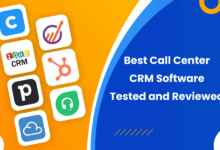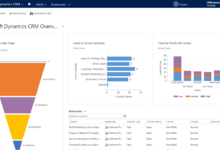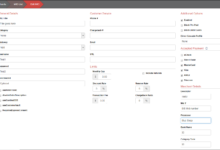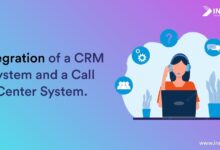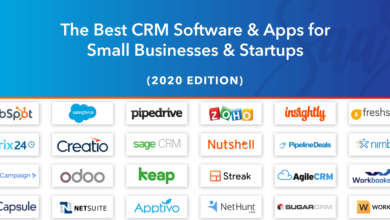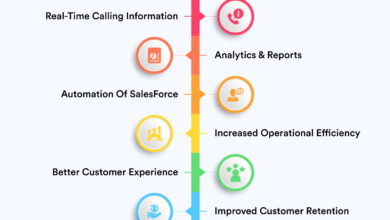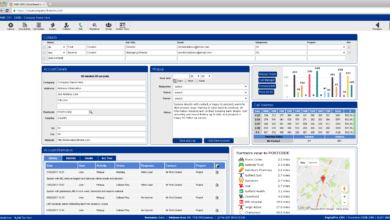CRM Roofing: Streamlining Roofing Businesses
CRM Roofing represents a significant advancement for roofing companies. By leveraging customer relationship management systems, roofing businesses can optimize operations, enhance customer relationships, and ultimately boost profitability. This exploration delves into the features, benefits, implementation, and future trends of CRM software specifically designed for the roofing industry, offering insights for businesses seeking to improve efficiency and growth.
This analysis covers the current market landscape, detailing key players and the diverse types of roofing businesses benefiting from CRM integration. We’ll examine essential features like lead management, job scheduling, and communication tools, comparing various platforms and their integration capabilities with existing business software. Furthermore, we will illustrate the potential return on investment (ROI) through real-world examples and discuss strategies for successful implementation and employee training.
CRM Roofing
The roofing industry, encompassing residential, commercial, and industrial sectors, is increasingly reliant on technology to streamline operations and enhance customer relationships. This has led to a burgeoning market for Customer Relationship Management (CRM) software specifically designed for roofing businesses. These systems offer a range of benefits, from improved lead management and project tracking to enhanced communication and reporting, ultimately contributing to increased efficiency and profitability.
CRM Roofing Market Overview
The market size for CRM software tailored to roofing businesses is currently experiencing significant growth, driven by the increasing adoption of digital tools within the industry and a growing need for efficient lead management and project tracking. While precise market figures are difficult to obtain due to the fragmented nature of the market and the lack of publicly available comprehensive data, estimates suggest a substantial and rapidly expanding market. This growth is fueled by the advantages CRMs offer in terms of cost savings, improved customer service, and increased sales conversion rates. We can project, based on the observed adoption rates in related industries and the increasing digitalization of the roofing sector, that this market will continue its upward trajectory in the coming years. For example, the broader construction CRM market is experiencing double-digit growth annually, suggesting a similar trend within the niche roofing segment.
Key Players in the CRM Roofing Software Industry
Several companies are actively competing in the CRM roofing software market, each offering varying features and functionalities. Pinpointing precise market share for each player is challenging due to the lack of publicly accessible data. However, some prominent providers include companies that offer industry-specific CRM solutions adaptable to roofing businesses, as well as larger CRM providers that offer customizable platforms to suit the roofing industry’s needs. These larger companies often have a significantly larger market share in the broader CRM market, but their specific penetration within the roofing niche is less transparent. Smaller, specialized roofing CRM developers often cater to specific needs or regional markets, filling gaps in service provision that larger companies may overlook. The competitive landscape is dynamic, with ongoing innovation and mergers and acquisitions shaping the market’s structure.
Types of Roofing Businesses Utilizing CRM Systems
CRM systems are proving valuable across the diverse spectrum of the roofing industry. Residential roofing companies leverage CRM software to manage customer leads, schedule appointments, track project progress, and handle customer communications efficiently. Commercial roofing businesses utilize these systems for managing larger-scale projects, tracking multiple contracts, and collaborating with subcontractors. Industrial roofing companies, often dealing with complex projects and specialized requirements, benefit from the enhanced project management and reporting capabilities of CRM systems. The ability to centralize all client and project data, regardless of the scale or type of roofing work undertaken, is a key driver of CRM adoption across all segments of the industry.
CRM Roofing
CRM systems are transforming the roofing industry, streamlining operations and improving customer satisfaction. A well-chosen CRM can significantly enhance a roofing company’s efficiency and profitability by centralizing crucial information and automating key processes. This section details the features and functionality of a CRM tailored for roofing businesses.
Lead Management
Effective lead management is paramount for roofing companies. A CRM system dedicated to roofing needs provides tools to capture leads from various sources (website forms, phone calls, referrals), automatically qualify them based on pre-defined criteria (e.g., project size, location), and track their progress through the sales pipeline. This ensures no potential customer slips through the cracks. Features like automated email sequences and lead scoring help prioritize high-potential leads, maximizing sales efforts. For example, a CRM could automatically assign a higher score to leads requesting large-scale commercial roofing projects versus smaller residential repairs.
Job Scheduling and Dispatch
Efficient job scheduling and dispatch are critical for optimizing crew productivity and minimizing delays. A roofing CRM facilitates this by providing a centralized calendar view of all scheduled jobs, considering factors like crew availability, project location, and material delivery timelines. The system can automate scheduling tasks, send reminders to crews and clients, and track job progress in real-time. Integration with GPS tracking systems can further enhance efficiency by providing real-time location updates for crews. This allows for better resource allocation and quicker responses to customer inquiries. For instance, if a crew finishes a job early, the system can immediately assign them to the next closest job on the schedule.
Customer Communication Tools
Maintaining clear and consistent communication with clients is crucial for building trust and ensuring project success. A roofing CRM integrates tools for various communication channels, including email, SMS messaging, and even phone calls (via integration with VoIP systems). The system can automate communication workflows, such as sending project updates, scheduling confirmations, and post-job satisfaction surveys. This ensures clients feel informed and valued throughout the entire process. For example, automated email reminders about upcoming appointments or material deliveries help prevent misunderstandings and delays.
CRM Platform Comparison
Several CRM platforms cater to the needs of roofing contractors, each with its strengths and weaknesses. Some popular options include HubSpot, Salesforce, and Zoho CRM. HubSpot excels in marketing automation and lead nurturing, making it suitable for companies focusing on lead generation. Salesforce offers robust features and scalability, but can be more complex and expensive. Zoho CRM provides a cost-effective solution with a good range of features, suitable for smaller businesses. The choice depends on the specific needs and budget of the roofing company. A small company might find Zoho’s simplicity advantageous, while a large company might need Salesforce’s advanced features.
Integration Capabilities
Seamless integration with other business tools is essential for a roofing CRM’s effectiveness. Integration with accounting software (e.g., QuickBooks, Xero) automates invoice generation and financial tracking. Integration with project management software (e.g., Asana, Trello) allows for streamlined project tracking and collaboration. Integration with GPS tracking systems, as mentioned earlier, enhances job scheduling and dispatch. These integrations prevent data silos and ensure all information is centralized and accessible. For example, the CRM can automatically update the accounting software with job completion information, reducing manual data entry and potential errors.
Sample User Interface Design
| Screen | Functionality | Description | Example |
|---|---|---|---|
| Dashboard | Overview | Displays key metrics like upcoming jobs, lead status, and revenue projections. | Visual representation of daily/weekly schedules, key performance indicators (KPIs) |
| Lead Management | Lead capture, qualification, and tracking | Allows for recording lead details, assigning scores, and tracking their progress through the sales pipeline. | Fields for name, contact information, project details, status updates, assigned salesperson. |
| Job Scheduling | Scheduling, dispatch, and tracking | Manages job assignments, crew availability, and project timelines. | Calendar view showing scheduled jobs, crew assignments, and material delivery information. |
| Customer Communication | Email, SMS, and phone call management | Facilitates communication with clients throughout the project lifecycle. | Templates for automated emails, SMS messages, and a log of all communications. |
CRM Roofing Implementation and Training
Successfully implementing a CRM system is crucial for any roofing business aiming to streamline operations, improve customer relationships, and boost profitability. This involves careful planning, data migration, comprehensive employee training, and proactive management of potential challenges.
Data Migration Strategies
Migrating existing customer and project data to a new CRM system requires a structured approach. Begin by thoroughly cleaning and validating your existing data to ensure accuracy and consistency. This may involve identifying and correcting duplicate entries, standardizing data formats, and addressing missing information. A phased approach is often best, starting with a pilot migration of a smaller subset of data to test the process and identify any issues before migrating the entire dataset. Consider using data import tools provided by your CRM vendor or engaging a data migration specialist for complex datasets. Regular data backups throughout the process are essential to prevent data loss.
User Onboarding and Training
Effective user onboarding is critical for successful CRM adoption. Develop a structured training program that caters to different employee roles and levels of technical expertise. This could include online tutorials, hands-on workshops, and ongoing support. Focus training on the key features and functionalities most relevant to each employee’s daily tasks. Provide clear, concise instructions and use real-life examples to illustrate how the CRM system can improve their workflow. Establish a system for ongoing support, including FAQs, documentation, and access to technical assistance. Regular refresher training sessions can also reinforce best practices and address emerging user needs.
Addressing Implementation Challenges
Implementing a CRM system can present several challenges. Resistance to change from employees accustomed to existing workflows is common. Addressing this requires clear communication about the benefits of the CRM system and providing adequate training and support. Data integration issues between the CRM system and other business applications can also arise. Careful planning and testing are crucial to ensure seamless data flow. Finally, insufficient budget or lack of dedicated resources can hinder implementation. A well-defined project plan with realistic timelines and resource allocation can mitigate these risks. For example, a small roofing company might start with a basic CRM system and gradually add features as needed, rather than attempting a full-scale implementation immediately. A larger company might allocate a dedicated project manager to oversee the implementation process.
CRM Roofing
Implementing a CRM system offers significant advantages for roofing businesses, streamlining operations and enhancing customer relationships. This leads to improved efficiency, increased profitability, and a stronger competitive edge in a demanding market. Understanding the potential return on investment (ROI) and key performance indicators (KPIs) is crucial for justifying the implementation and measuring its success.
Return on Investment (ROI) of CRM in Roofing
The ROI of a CRM system for a roofing company isn’t immediately apparent in a single number, but rather manifests through various improvements across the business. Consider a mid-sized roofing company with 200 leads per month, a 10% conversion rate, and an average job value of $10,000. Implementing a CRM could improve lead conversion by 5% (to 15%) and reduce administrative overhead by 10%. This translates to an additional 50 jobs per month (5% of 1000 leads) generating $500,000 in extra revenue. Simultaneously, a 10% reduction in administrative costs (salaries, paperwork, etc.) could represent substantial savings depending on current overhead. These savings, combined with increased revenue, represent a significant ROI. Further ROI can be achieved through improved customer retention, leading to repeat business and positive word-of-mouth referrals.
Key Performance Indicators (KPIs) for CRM Effectiveness
Tracking specific KPIs allows for accurate measurement of CRM effectiveness. These KPIs provide concrete data to demonstrate the value of the system and identify areas for improvement.
- Lead Conversion Rate: Tracks the percentage of leads that convert into paying customers. An increase indicates improved sales efficiency.
- Customer Acquisition Cost (CAC): Measures the cost of acquiring a new customer. A decrease shows improved efficiency in marketing and sales.
- Average Revenue Per Customer (ARPC): Indicates the average revenue generated per customer over a specific period. An increase reflects improved sales and customer retention.
- Customer Lifetime Value (CLTV): Predicts the total revenue a customer will generate throughout their relationship with the company. Higher CLTV demonstrates effective customer relationship management.
- Sales Cycle Length: Measures the time it takes to close a deal. A shorter cycle indicates improved sales efficiency and faster revenue generation.
- Number of Repeat Customers: Shows the percentage of customers who return for additional services. Higher numbers indicate strong customer satisfaction and loyalty.
- Customer Satisfaction (CSAT): Measured through surveys or feedback, it provides insights into customer experience and areas for improvement.
Benefits of CRM for Roofing Businesses
A CRM system provides a multitude of benefits, enhancing operational efficiency, improving customer relationships, and boosting the bottom line.
Operational Efficiency
- Improved Lead Management: Centralized tracking and management of leads, ensuring no opportunity is missed.
- Streamlined Scheduling and Dispatch: Optimized scheduling of jobs and technicians, minimizing delays and maximizing efficiency.
- Automated Workflows: Automation of repetitive tasks like email reminders and follow-ups, freeing up time for more strategic activities.
- Enhanced Communication: Improved internal and external communication, reducing misunderstandings and improving project coordination.
- Better Inventory Management: Tracking of materials and supplies, minimizing waste and ensuring timely procurement.
Customer Relationship Management
- Personalized Customer Interactions: Tailored communication based on individual customer preferences and history.
- Improved Customer Service: Faster response times and more efficient resolution of customer issues.
- Increased Customer Retention: Building stronger relationships with customers through personalized service and follow-up.
- Enhanced Customer Loyalty: Creating a positive customer experience that encourages repeat business and referrals.
Financial Benefits
- Increased Revenue: Improved lead conversion and customer retention directly translate to higher revenue.
- Reduced Costs: Streamlined operations and automation reduce administrative overhead and material waste.
- Improved Profitability: Increased revenue and reduced costs result in improved overall profitability.
- Better Forecasting and Planning: Data-driven insights allow for more accurate forecasting and better resource allocation.
CRM Roofing
Implementing a robust CRM system can revolutionize a roofing company’s operations, leading to significant improvements in efficiency and customer satisfaction. This section explores the benefits through a hypothetical case study and examines the valuable reporting capabilities of a CRM system within the roofing industry.
Successful CRM Implementation: A Case Study
Apex Roofing, a medium-sized company experiencing rapid growth, faced challenges managing its increasing customer base and project pipeline. Their previous system relied heavily on spreadsheets and email, leading to missed deadlines, duplicated efforts, and inconsistent customer communication. After implementing a CRM system, Apex Roofing streamlined its operations. The system centralized all customer information, project details, and communication history, providing a single source of truth for all employees. This improved team collaboration significantly. For example, sales representatives could instantly access previous interactions with a customer, leading to more personalized and informed sales pitches. Project managers could track progress in real-time, identifying potential delays early and proactively addressing them. The CRM’s automated features, such as appointment reminders and follow-up emails, freed up valuable time for employees to focus on higher-value tasks. The result was a 20% increase in project completion rate, a 15% reduction in administrative overhead, and a marked improvement in customer satisfaction scores, as reflected in positive online reviews and increased referrals.
CRM Reporting for Roofing Businesses
A CRM system generates various reports crucial for strategic decision-making in roofing businesses. These reports provide actionable insights into sales performance, customer behavior, and operational efficiency. For example, a sales report might detail the number of leads generated, conversion rates, and average deal size, broken down by sales representative or marketing campaign. This data allows management to identify top performers, optimize sales strategies, and allocate resources effectively. Similarly, a customer service report might track customer satisfaction levels, response times to inquiries, and the resolution of complaints. This data highlights areas for improvement in customer service processes and helps build stronger customer relationships. Project management reports offer insights into project timelines, budget adherence, and resource allocation, enabling better project planning and execution. Financial reports, integrating CRM data with accounting software, provide a comprehensive overview of revenue, profitability, and expenses, facilitating informed financial planning and forecasting. By analyzing these reports, roofing companies can identify trends, optimize processes, and make data-driven decisions to enhance profitability and growth.
CRM Roofing
The roofing industry is undergoing a significant transformation, driven by technological advancements and evolving customer expectations. Implementing a robust CRM system is no longer a luxury but a necessity for roofing companies seeking to maintain a competitive edge and achieve sustainable growth. This section explores the future trends shaping CRM software within the roofing sector.
Future Trends in CRM for Roofing
The integration of artificial intelligence (AI) and mobile technologies is rapidly reshaping CRM systems for roofing businesses. AI-powered features, such as predictive analytics, can help roofing companies anticipate customer needs and optimize resource allocation. For example, AI can analyze historical data to predict potential roof repairs or replacements based on weather patterns and property age, allowing for proactive outreach and improved customer retention. Mobile CRM applications enable field technicians to access real-time customer information, update job progress, and capture crucial data directly on-site, streamlining workflows and enhancing communication. This contributes to improved efficiency and customer satisfaction.
Predictions for the Future of CRM in Roofing
Technological advancements will continue to drive the evolution of CRM in the roofing industry. We can anticipate even more sophisticated AI capabilities, including natural language processing (NLP) for improved customer service interactions and automated report generation. Furthermore, the integration of CRM with other business software, such as project management tools and accounting software, will become increasingly seamless, creating a more holistic and efficient business ecosystem. For instance, a roofing company might integrate its CRM with a drone-based inspection system, automatically updating customer records with detailed roof condition assessments. This proactive approach improves customer engagement and operational efficiency. Changing customer expectations will also influence the future of CRM. Customers increasingly demand personalized experiences and instant communication. CRM systems will need to adapt by providing enhanced personalization features, enabling real-time communication channels, and facilitating proactive customer service. Companies like CertainTeed, for example, are already incorporating digital tools to enhance customer interactions, demonstrating the industry’s embrace of digital transformation.
Visual Representation of CRM Workflow in Roofing
A robust CRM system streamlines the entire roofing process, from initial contact to final payment and beyond. Visualizing this workflow helps roofing companies understand how each stage contributes to overall efficiency and customer satisfaction. The following description details a typical workflow, allowing for a clear visual representation.
A visual representation of this workflow could be a flowchart or a process map. It would begin with a large circle labeled “Lead Generation,” branching out to various sources like online inquiries, referrals, and marketing campaigns. Each branch would lead to a subsequent stage.
Lead Capture and Qualification
The initial stage involves capturing lead information – name, contact details, project specifics (roof type, size, damage assessment). The CRM automatically logs this data. Next, leads are qualified based on pre-defined criteria (e.g., budget, location, project urgency). Qualified leads are prioritized for immediate follow-up, while others are nurtured through targeted marketing. The visual would show a funnel, with the wide top representing the raw leads and the narrow bottom representing qualified leads.
Scheduling and Site Visits
Qualified leads are contacted to schedule a site visit. The CRM integrates with scheduling tools, allowing for automated appointment reminders and rescheduling options. During the site visit, detailed assessments are recorded directly into the CRM, including photos and notes on damage, material requirements, and project scope. The visual would depict a calendar icon transitioning to a picture of a roof inspection with a checklist.
Proposal and Quotation Generation
Based on the site visit assessment, a detailed proposal and quote are generated. The CRM might have templates and automated pricing calculations to expedite this process. The proposal is sent electronically through the CRM, and the system tracks its status (sent, viewed, accepted). The visual could show a document icon with a checkmark indicating acceptance.
Project Management and Execution
Once the proposal is accepted, the project enters the execution phase. The CRM tracks project milestones, material orders, subcontractor assignments, and timelines. Progress updates can be automatically sent to the client. The visual could represent this phase with a Gantt chart showing the different stages of the project.
Completion and Payment Processing
Upon project completion, a final inspection is conducted, and the CRM updates the project status to “complete.” Payment processing is integrated, enabling easy invoicing and tracking of payments. The visual could show a completed project checklist transitioning to a payment processing icon.
Customer Follow-up and Relationship Management
Post-project, the CRM facilitates customer follow-up through automated satisfaction surveys and scheduled check-ins. This strengthens customer relationships and encourages referrals. The visual would conclude with a happy customer icon and a loop back to “Lead Generation,” highlighting the cyclical nature of customer relationships.
Last Word
Implementing a CRM system offers roofing businesses a powerful tool to manage leads, streamline operations, and strengthen customer relationships. From improved efficiency and increased profitability to enhanced customer satisfaction and data-driven decision-making, the benefits are substantial. By embracing CRM technology and adapting to future trends, roofing companies can position themselves for continued success in a competitive market. The journey to optimized business performance begins with the strategic integration of a well-chosen CRM system.
